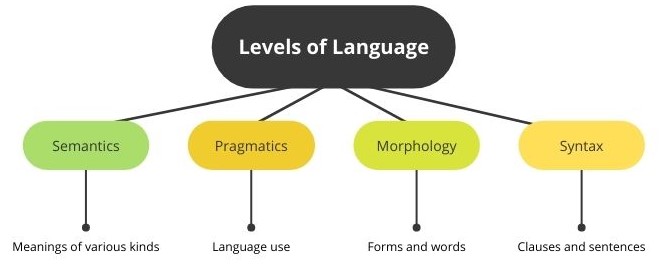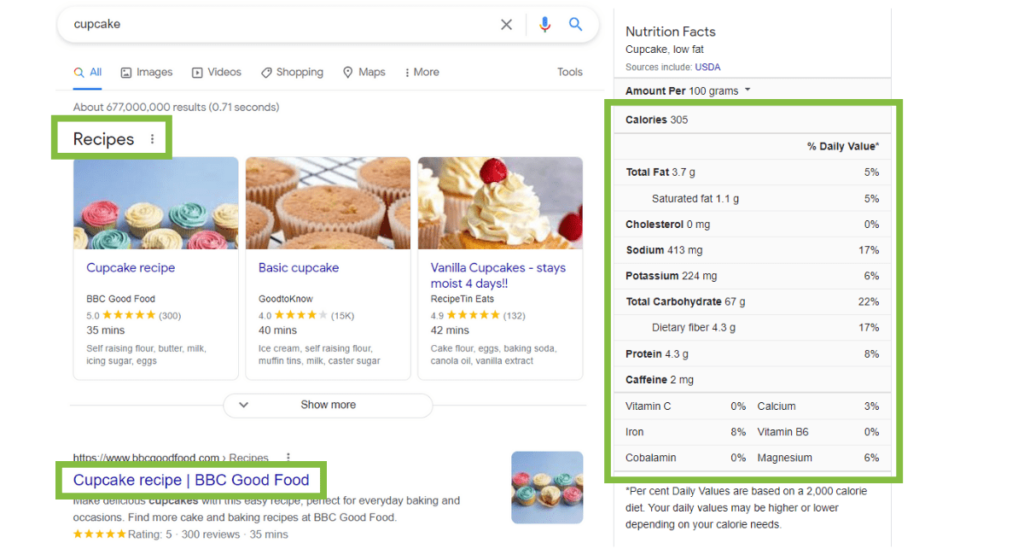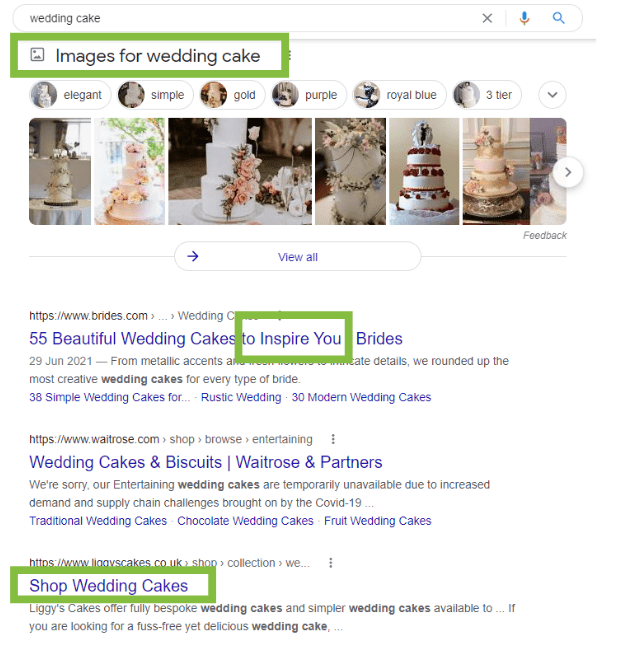Why a Linguistic Approach to SEO is Important
Effective SEO is a culmination of lots of contributing factors, and taking a linguistic approach to SEO is a fundamental one.
Gone are the days of only interpreting individual keywords – Google is getting better at understanding language in the same way a human can.
This is all part of the push to reward ‘quality content’ and serve users with more accurate and closely matched results. If Google is looking at language more closely, you should be too.
But how exactly does Google understand language?
Linguistics, which is the scientific study of language, plays a pretty huge part.
Through each algorithm update, Google takes major steps towards understanding the many multi-dimensional aspects of language. Mostly through the linguistic features that help communicate the meaning, context and intent behind what we say.
Beyond the keyword itself, there’s a lot more going on under the surface of searches and online content, and it’s Google’s ultimate aim to figure this out.
Linguistic Aspects of Language
Before diving into linguistic approaches to SEO, it’s useful to first consider the different aspects of language that are at play when we search online.
Intuitively, we form searches using words, which in turn form sentences that carry some kind of meaning. However, language doesn’t just consist of words.
So how does Google interpret meaning from a simple string of words?
Using additional linguistic information surrounding keywords, Google looks at:
- Semantics – the meanings of words and sentences.
- Pragmatics – contextual features that can affect the meaning.
- Morphology – word features such as prefixes, suffixes and their base form. For example, skip, skipping and skipped.
- Syntax – sentence features such as structure.
In combination, Google focuses on a system of linguistic features that help its algorithms process natural language. And as a result, deliver a better user experience with more accurate and relevant search results.

Creating High Quality Content
Once upon a time, it was common practice to optimise content purely for keywords. In the very early days, people could even rank with uninformative pages that were simply filled with keywords.
Now, Google processes language through an extensive algorithm that looks well beyond the keyword. It will also consider the broader phrase, words and related searches that provide additional information around the term.
Through understanding language at different levels of syntax, morphology, semantics, and pragmatics, Google is becoming much smarter at understanding what our search terms mean – and the kind of content users expect to see.
This has direct implications on what characterises high-quality content. Long gone are the days of stuffing content with a target keyword in the hope that it magically ranks.
Not only does keyword stuffing create a terrible user experience, Google will actually penalise your site if it finds you doing this; which has been the case ever since 2011’s Google Panda update.
Instead, high-quality content must take into account the same linguistic considerations that Google does. This means evaluating the meaning, context, intent and other factors surrounding your target keyword.
Semantics: Understanding Meaning
One of Google’s main aims is to understand the exact meanings of searches and content, which is where semantics comes into play.
Semantics is concerned with the meaning of words and sentences. In spoken conversation, we intuitively relate words and sentences to certain meanings, making mental representations and connections to our existing knowledge in order to understand what is being said.
Despite not having a brain, Google deals with semantics pretty similarly – which is both impressive and scary.
Google’s Semantic Search Model
Following the Hummingbird update (2013), Google’s algorithm undertook a more extensive semantic search model, taking drastic steps towards understanding the meaning of searches and content. From this, Google could determine search intent much more accurately and match users with more relevant results.
The semantic search model uses a range of techniques, such as analysing the relations between similar search queries. Through doing so, Google gathers a richer understanding of the kinds of information users like to see around a particular search term, which is why topic clusters often work so well.
To see semantic search in action, take a look at the difference in search results between the keywords ‘cupcake’ and ‘wedding cake’.
Cupcakes vs. Wedding Cakes
When we search for cupcakes, we see a set of recipes alongside standard organic search results. Although alongside this, the search results contain a right-hand-side panel of nutritional facts:

In contrast, when we search for wedding cakes, search results contain images of wedding cakes, wedding cake inspiration articles and pages where we can buy a wedding cake.
The top ranking results do not show recipes, nor do SERP features contain nutritional facts in the way that cupcakes do:

What Can Cake Teach Us About SEO?
The search results for cupcakes and wedding cakes are clearly very different. One matches the searcher with recipes, the other matches the searcher with inspiration or purchase pages. And there’s a reason for this: semantic search.
Google’s semantic search model has matched the most appropriate results to the user’s intent, using data beyond the individual keyword to determine the intention behind the search.
For instance, cupcakes are something we would be more likely to make at home, making these recipe results super useful.
Wedding cakes however, are something we are more likely to buy from a professional cake maker, and for this, we may need the ideas and inspiration that Google’s search results are showing.
When considering semantic search in your own content, it is important to first ensure the information you provide matches the intent of your searcher.
Pragmatics: Understanding Context
Pragmatics is an area of linguistic study concerned with how context contributes to meaning. During everyday conversations, we draw on contextual cues that tell us more about what is being said and how we should respond.
For example, if someone were to say “I am a little bit cold” in a room with an open window, this is could often be an implicit request to close the window.
Google is getting better and better in its ability to interpret language on a pragmatic level, identifying implied meanings through contextual cues.
For example, If you were to search ‘do I need to wear a coat today’, Google will actually provide you with weather results, despite the search query making no explicit request for weather information.

To understand that the search query ‘do I need to wear a coat today’ actually meant ‘what’s the weather like near me’, Google had to take contextual information into account.
This contextual information includes the searcher’s location and pragmatic interpretation of the phrase’s possible implied meanings.
Now… unless Google is actually a real human being who works tirelessly to provide us with information every millisecond of every day, we can safely assume that Google has never worn a coat.
Despite this, it has understood that the need to wear a coat is dependent on the context of the weather. Using only the words provided in the search, Google has drawn on this contextual information to match the searcher with weather results.
And not only do the results relate to weather, they relate to the searcher’s location.
Through pragmatic analysis, amongst other linguistic evaluations, Google provides us with meaningful results; even when our searches aren’t explicitly defined.
With pragmatics in mind, a linguistic approach to SEO must consider exactly what the searcher needs. And most importantly, signal that you understand these needs with a relevant solution.
Morphology: Understanding Words
There’s a fairly common misconception that Google only looks at one exact form of the keyword when providing search results. However, your target keyword can often be more flexible than you might think.
Since Google has a good understanding of morphology, which is all about the way we form words, it is able to understand the different variations and forms of keywords.
In everyday conversation, the word ‘walk’ could be formed in slightly different ways depending on what is being said. ‘Walk’ could become ‘walking’, ‘walked’, or ‘walks’.
And Google knows this.
This means that if you were to write an article about ‘outdoor walking’, Google can understand that ‘walk’, ‘walked’ and ‘walks’ are morphological variations of the word ‘walking’.
What’s more, Google is very good at understanding synonyms, such as ‘outside’, ‘nature’, ‘hiking’ and ‘hikes’.
You should therefore avoid stuffing your content with the same keyword over and over again, and feel encouraged to include different word variations. Plus, variating your keywords helps your content read more naturally, which is something that Google enjoys too!
Google’s Word List
Your consideration of words should be expansive and go beyond just the keyword.
Both for readability and to avoid keyword stuffing, your approach to content should always consider language use in its entirety, encouraging an inclusive and positive user experience.
In fact, Google themselves provide guidance on terms that should be avoided in web content. Whilst this list is not directly intended for SEOs or website owners, and there is no data to suggest that using these terms will negatively impact rankings, it is best to avoid using terms that Google considers inappropriate.
Most of these are terms that Google considers disrespectful or offensive, so it is always worth checking these style guidelines if you are ever uncertain.
As we see each Google algorithm update take steps toward providing more accurate results, it is possible that future updates may even begin to favour content that avoids offensive terms.
Syntax: Understanding Structure
As we often search for information using more than just an individual keyword, Google are heavily invested in developing Natural Language Processing (NLP) systems that understand full search phrases.
This means that Google likes to look at the syntax of searches and content. Syntax relates to the structure of language, focusing on linguistic aspects such as word order and the arrangement of sentences.
Following the BERT update (2019), Google began paying closer attention to the syntactic structures of search queries. Its algorithms take a look at the series of words that come before and after the keyword in order to understand its structure and meaning more effectively.
Is Word Order Important?
The way your audience search for your product or service online may not always be the same. Especially if your product or service name is a couple of words long, or if your page targets local SEO terms.
As a result, you might find that there are multiple word order versions of your target search phrase.
Let’s take a look at some search phrases for SEO services in Sheffield:

These two search phrases contain the exact same words, differing only by word order. The average search frequency is also different, with 140 for SEO services Sheffield, and 30 for Sheffield SEO services.
So, why should you optimise for both, despite Google being smart enough to display your page if the words are present in any order?
Here’s where syntax and semantic search become linked.
As we touched on earlier, Google’s semantic search model cross-references searches with similar queries. By accounting for different word order variations, you can expand the semantic core of your content by referencing more than one search option.
Sociolinguistics: Understanding Your Audience
Understanding your audience is essential for good SEO. It’s all about finding your online audience and making yourself more visible to the right users.
This means identifying the language your audience uses, and most importantly, reflecting this in your content.
By creating more relevant content that’s worded specifically for your intended audience, users are much more likely to engage with your site.
Your approach to content should consider sociolinguistic aspects of language, such as regional dialects and colloquialisms.
If your audience is more local, a focus on regional dialects is particularly important. Let’s say you owned a local bread shop in the UK and were looking to attract local customers online.
With over 8 different UK versions of the word bread, from ‘bap’, ‘cob’, ‘roll’, ‘barm’, ‘bun’ and more, terms for bread include some of the most regionally focused variations amongst UK lexicon.
Including more standard terms like ‘bread’ would still be pretty important, but targeting regional terms would open the opportunity to reach a more localised online audience.
Getting the term right will help your content reach the right audience. So it’s always useful to consider the kind of language they might be using.
A Linguistic Approach to SEO
It’s pretty clear that Google is getting much better at understanding language, with the ultimate aim of providing users with high-quality results that closely relate to their search.
Using artificial intelligence and Natural Language Processing capabilities, Google is continually progressing its ability to understand language like a human. With this in mind, it’s important to look beyond writing purely for search engines.
Instead, you should be writing for your audience, not only to provide a positive user experience but because Google is much better at processing linguistic information and natural language than you may think.
Always write naturally, in a way that avoids stuffing the content with the keyword. And consider the full linguistic scope of your topic, looking into the contexts, intentions, meanings and variations behind target search terms.
Speak to the experts
When it comes to SEO and writing content, it can be difficult to know where to start. There are many complexities, linguistics just being one of them – and that’s after you’ve managed to make time to start.
That’s where we can help.
Our award-winning team of SEO experts is one of the largest in the North of England. We’re here to ensure your SEO is getting results, and your content is the best it can possibly be.
Get in touch or find out more about SEO services.

Jacob has a background in linguistics and digital language, with a keen interest in all things content!

